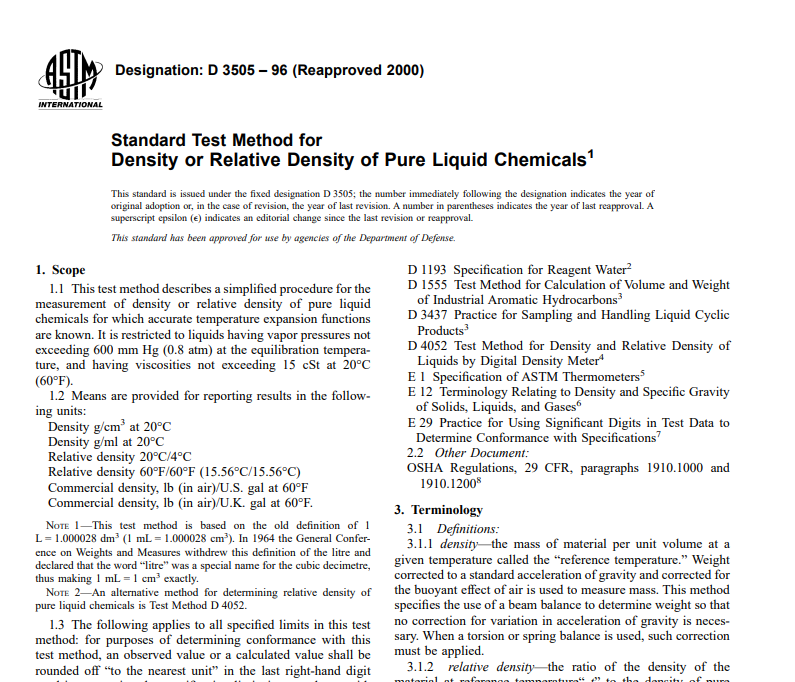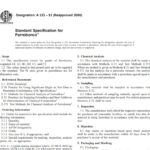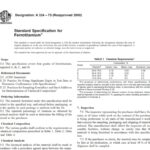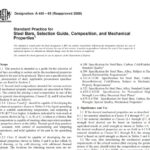Standard Test Method for
Density or Relative Density of Pure Liquid Chemicals1
This standard is issued under the fixed designation D 3505; the number immediately following the designation indicates the year of
original adoption or, in the case of revision, the year of the last revision. A number in parentheses indicates the year of last reapproval. A
superscript epsilon (e) indicates an editorial change since the last revision or reapproval.
This standard has been approved for use by agencies of the Department of Defense.
1. Scope
1.1 This test method describes a simplified procedure for the
measurement of density or relative density of pure liquid
chemicals for which accurate temperature expansion functions
are known. It is restricted to liquids having vapour pressures not
exceeding 600 mm Hg (0.8 atm) at the equilibration temperature, and having viscosities not exceeding 15 CST at 20°C
(60°F).
1.2 Means are provided for reporting results in the following units:
Density g/cm3 at 20°C
Density g/ml at 20°C
Relative density 20°C/4°C
Relative density 60°F/60°F (15.56°C/15.56°C)
Commercial density, lb (in the air)/U.S. gal at 60°F
Commercial density, lb (in the air)/U.K. gal at 60°F.
NOTE 1—This test method is based on the old definition of 1
L = 1.000028 dm3 (1 mL = 1.000028 cm3
). In 1964 the General Conference on Weights and Measures withdrew this definition of the litre and
declared that the word “litre” was a special name for the cubic decimetre,
thus making 1 mL = 1 cm3 exactly.
NOTE 2—An alternative method for determining the relative density of
pure liquid chemicals are Test Method D 4052.
1.3 The following applies to all specified limits in this test
method: for purposes of determining conformance with this
test method, an observed value or a calculated value shall be
rounded off “to the nearest unit” in the last right-hand digit
used in expressing the specification limit, in accordance with
the rounding-off method of Practice E 29.
1.4 This standard does not purport to address all of the
safety concerns, if any, associated with its use. It is the
responsibility of the user of this standard to establish appropriate safety and health practices and determine the applicability of regulatory limitations prior to use. Specific hazard
statements are given in 7.1.
2. Referenced Documents
2.1 ASTM Standards:

Click below to download Astm D 3505 – 96 (Reapproved 2000) pdf free
Click here to download Astm D 3504 – 96 (Reapproved 2003)E1 Pdf Free Download






